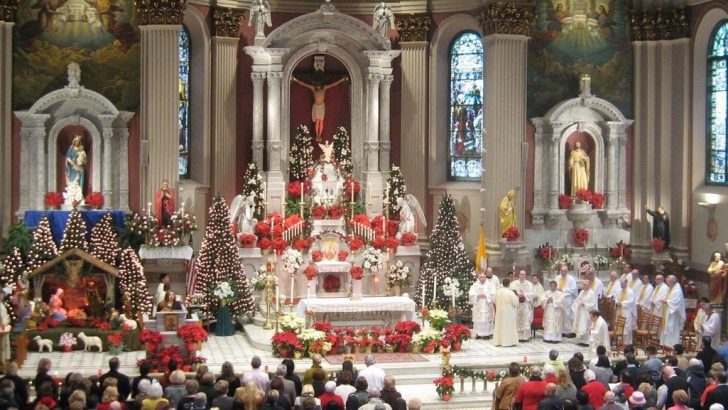“A rough calculation, based on this exit poll, would put weekly Mass attendance among Catholic voters at about 40%”, analyses Andrew O’Connell
The recent exit poll, conducted by Behaviour and Attitudes for RTÉ on election day, included questions on religious affiliation and church attendance.
Voters were quizzed as they left their polling stations across the 40 constituencies on February 26. Some 79% identified as Catholic, while 9% described themselves as “not religious, although I do consider myself a spiritual person”. Other responses included Protestant (3%), atheist (4%), and agnostic (1%).
The exit poll also found that 62% of 18 to 24 year old voters described themselves as Catholic. A further 12% were atheist, 3% agnostic and 17% ‘spiritual, but not religious’. The glass is half full or half empty based on numbers like this.
Pollsters also enquired about the frequency of attendance at religious services. Weekly attendance was found to be 34%. This includes 5% who worship more regularly than once a week. A further 15% attend monthly, with 27% saying “a few times a year” and 24% “never or hardly ever” attending.
Believers and non-believers alike were asked this question. That should be borne in mind when making comparisons with previous surveys, which tend to measure the percentage of Catholics who attend Mass. A rough calculation, based on this exit poll, would put weekly Mass attendance among Catholic voters at about 40%.
No claim
The exit poll makes no claim to be representative of the population at large. It reflects only those who voted on election day and that group included a disproportionate number of older people.
That said, how does it compare to previous studies? One survey in 2012 found an island-wide, weekly Mass attendance rate of 35% among Catholics. Another, also in 2012, put it at 34% among Catholics in the Republic.
The exit poll findings seem to support the observation that the fall-off in weekly church attendance is now gradual rather than precipitous.
Indeed, on these figures, one might be tempted to argue it has plateaued or base-lined, but, even if it has, that is unlikely to continue on account of the poor weekly attendance among younger cohorts: only 12% of 18-24 year old voters, and 13% of 24-35 year old voters, say they attend a service weekly.
Dublin voters were the least likely to attend a service weekly (17%), but attendance rates were much stronger in other regions: 37% in Leinster, 41% in Munster, and 47% in Connacht/Ulster.
Finally, one could quibble with the way the question was asked: “How often nowadays do you attend religious services?” That word ‘nowadays’ is troublesome. It could suggest that an individual’s religious practice ‘nowadays’ ought to be different to other days.
In short, accounting for the limitations of statistics to assess religious conviction, the figures confirm the challenge the Church faces in relating to the young, while highlighting the quiet and enduring faith of a significant number of Irish people.
Faith of our Farmers: Sociological and historical analyses of the decline of the Catholic Church often focus on the dramatic loss of support among the so-called ‘working class’.
This exit poll also analysed weekly attendance at religious services by social category. The better-off ABC group, consisting of white collar, middle class voters, had a weekly attendance rate of 27%. That rose to 37% among the less well-off, blue collar, C2DE grouping. The rate for farmers (F) was a striking 74%.
White collar voters were also more likely to identify as agnostic, atheist or ‘spiritual but not religious’ (18%) versus blue collar voters (12%). Only 3% of farmers identified with those categories.
Party at prayer
The RTÉ-Behaviour and Attitudes exit poll also examined weekly attendance at a religious service among voters for each political party.
It comes as no surprise that Fianna Fáil supporters emerge as the most religious: 49% – the highest of any party – attend a weekly service. Corresponding figures for other parties are: FG (39%), Labour (33%), Sinn Féin (20%).
Only small numbers of voters were polled for the new parties, but, for what it’s worth, weekly attendance was found to be: Social Democrats (22%), Renua (23%), AAA-PBP (11%) and Independent Alliance (33%).



